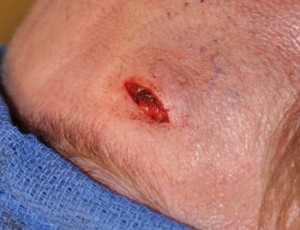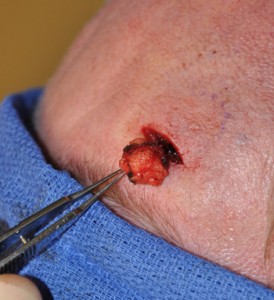Background: One source of forehead migraine pain is compression of the supraorbital nerve. Squeezing of the nerve as it comes out of the supraorbital foramen or notch by the enveloping muscles is a well recognized source of migraines that is treatable by decompression either through Botox injections or surgical removal of muscle tissue. (migraine surgery) The effectiveness of supraorbital nerve decompression on migraine relief is now well documented.
But the supraorbital nerve can become compressed by other means although much less commonly. Examples include bone fractures that involve the frontal sinus that go through the nerve foramen or notch or lacerations of the brow that may entrap nerve branches in scar tissue. Tumor or masses can also cause nerve compression as they expand.
One common but benign forehead soft tissue tumor is the lipoma. Lipomas are encapsulated collections of abnormal fat cell growth that present as subcutaneous masses or nodules. They grow slowly and are often not noticed until they are seen as a visible lump through the skin. They can occur anywhere on the body and the forehead and scalp are no exceptions. It is conceivable that a lipoma located near the supraorbital nerve can cause painful compression.
Case Study: This 48 year-old male had noticed a lump that appeared above his left brow over the past year. As the lump appeared so did persistent and increasing headaches on that side of the forehead. The lump felt firm, immobile, and down at the bone level. It was felt that it was either a lipoma or an osteoma so no diagnostic s-rays were done.


Lipomas are a rare cause of supraorbital pain/headaches but the mass compression effect is easy to understand. Fortunately, the lipoma is straightforward to remove using a direct forehead incision in a patient that has existing wrinkles. In females without wrinkles it may need to be removed through an endoscopic technique to eliminate visible scarring if no forehead wrinkles exist.
Case Highlights:
1) Pressure on the supraorbital nerve of the forehead is a known source of headache pain.
2) Lipomas can occur on the forehead and may rarely put pressure on branches of the supraorbital nerve causing pain.
3) Excision of a forehead lipoma can be a source of relief of headache pain through its decompressive effects.
Dr. Barry Eppley
Indianapolis, Indiana


